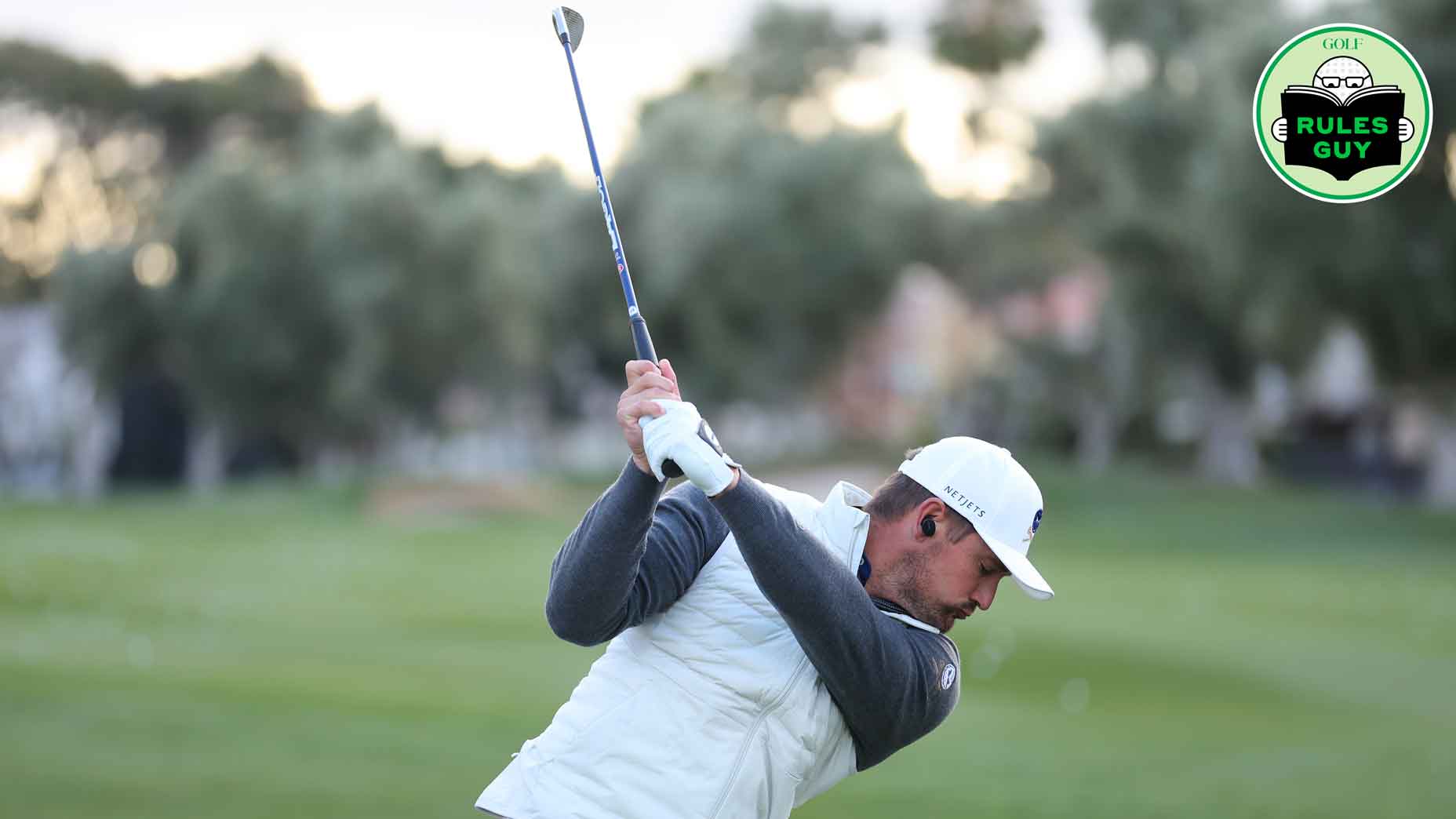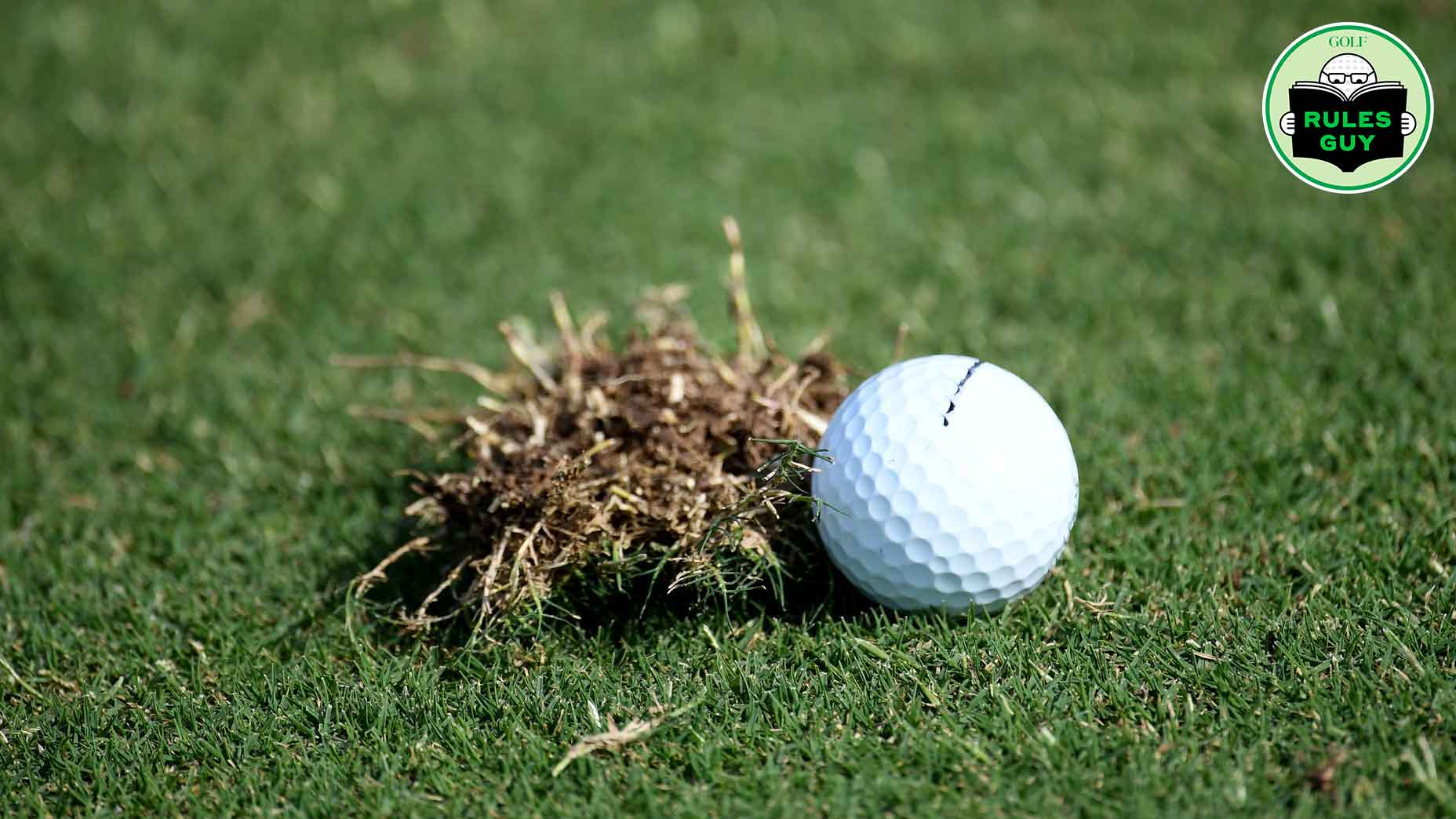At my home course, there is a group of bushes near a green that our Local Rules say to play as a free lift. My opponent hit into these bushes, and we couldn’t find his ball. He took a free drop, citing the Local Rule. My thought was that it’s only a free lift as long as you find the ball. Who’s right? — PETER KAPLAN, VIA E-MAIL
Rules Guy is not one to beg off on rules matters—yet, again, this question defies certainty. This “free drop from the bushes” doesn’t seem kosher. Local Rules must be in compliance with, or authorized under, the Rules of Golf. Nor can they wave any Rules of Golf. Under Rule 33-8, Local Rules can be established as long as they’re consistent with the policies set forth in Appendix 1; Decisions on the Rules of Golf illuminates which Local Rules are authorized and which aren’t. Ask your committee to read them and clarify the matter.
I was playing alone early one morning and struck a nice approach near the flag. By the time I’d reached the green, the groundskeeper had dug another hole, far from my ball, and put the pin in it. Instead of a close birdie putt, I was lucky to make a long two-putt par. Could I have putted to the original, yet-unfilled hole? — DAVE TONGE, ELGIN, ILL.
Congratulations, Dave: You have stumped the rules, which don’t contemplate this situation. But you have not stumped Rules Guy, who points you toward the committee in charge of the competition or course. In such situations, you can play two balls (here, one to each hole) and record the scores, then request a ruling from the committee. Note, however, that the USGA’s handicapping policy recently changed, such that a round played alone can’t be posted. So in essence, you were free to do as you wished.
On the green, my friend gets behind his ball, lines up his putter, then leaves it in place as he walks around it to take his stance. I’ve warned him that he has addressed the ball once when he grounds the putter behind it, and if the ball moves any time before he putts he’ll incur a penalty. I’m right…right? — CURTIS HERRIN, VIA E-MAIL
In one sense, your concern is, ahem, well grounded: Addressing the ball is indeed based solely on grounding the club, either directly in front of or behind the ball — you need not have taken your stance. Still, you are outdated. In 2016, the USGA removed Rule 18-2b, which had said that if a player addressed his ball and it moved, the assumption was that the player caused it to move. Also, there is a new Local Rule which — if in effect — means that should a player accidentally move a ball at rest on a putting green, he can replace the ball and play on with no penalty. But if the local rule isn’t in effect, it is indeed a one-stroke penalty if the player caused the ball to move and the ball is replaced, per Rule 18-2.
My playing partner drove way right, while I went way left. We couldn’t see each other and played our approach shots at the same time. As they approached the green, the shots collided in midair. My competitor claimed his ball would have landed within two feet of the cup. I felt my ball would have holed out. We played the balls from where they ended up. Was this correct? — GEORGE VAN DAM, DETROIT LAKES, MINN.
It is buoying to hear such optimism, and to see right and left meet in the middle! Happy thoughts aside, in stroke play, yes, you’d each play your ball as it lies, under Rule 19-5b, which covers a ball in motion deflected by another ball in motion. In match play, the player whose turn it was (i.e., the one farther from the hole) can accept the outcome of both strokes or cancel both and replay them in the proper order. The latter route leaves open the possibility that you could each hole out!
GOT A RULES QUESTION? Of course you do! Whatever it may be, send yours to rulesguy@golf.com and the question may be answered in an upcoming issue of GOLF. Until then, play by the Rules!





